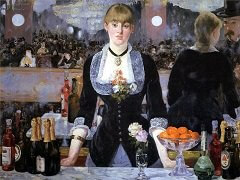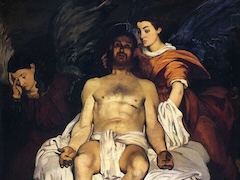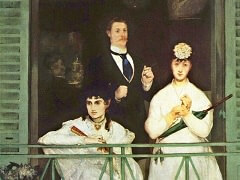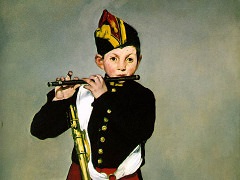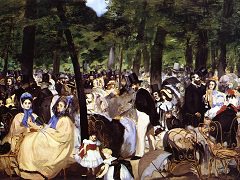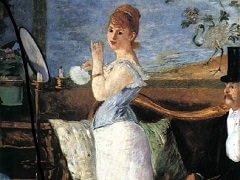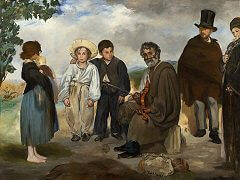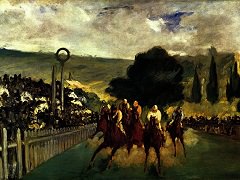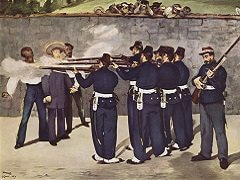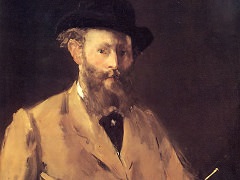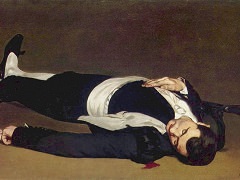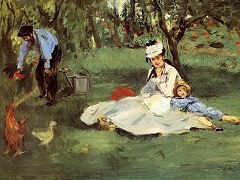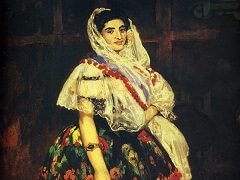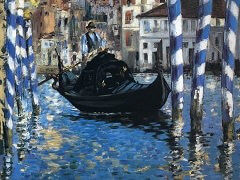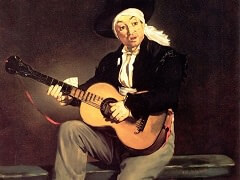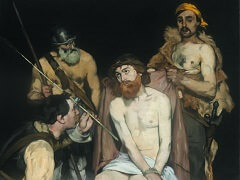The Surprised Nymph, 1859-61 by Édouard Manet
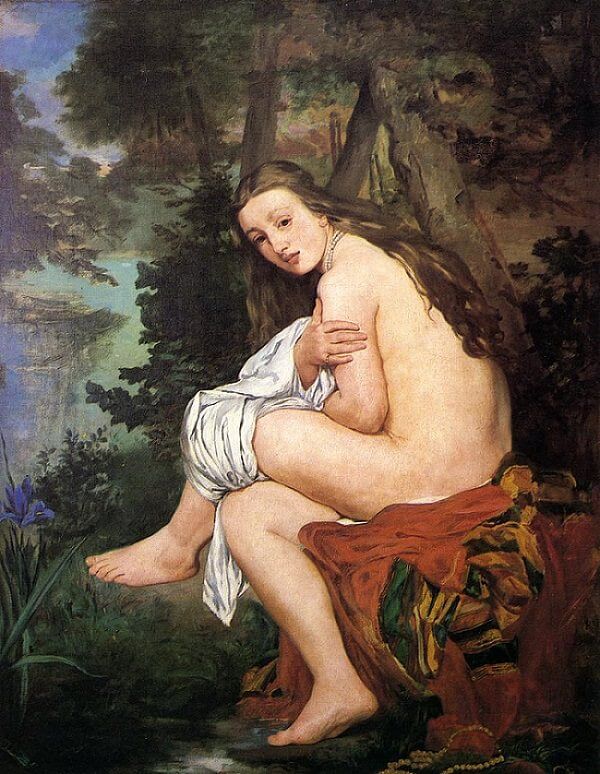
Along with the Dejeuner sur I'herbe and Olympia, The Surprised Nymph is one of Manet's major treatments of the quintessential subject-matter of academic practice: the female nude. Like the two slightly later paintings, this is a large work and one which clearly took Manet some time to produce.
It is believed that the model for the painting was Suzanne Leen-hoff, Manet's future wife. In part, the work may be a pun on her name, for her pose is reminiscent of that of conventional depictions of Susannah disturbed by the elders, at once provocative and chaste. Around the time he produced this work, Manet moved into a new apartment on the rue de l'Hotel de Ville with Suzanne and Leon and the ambivalent attitude of the nude woman may suggest the artist's response to his future wife who in later paintings is shown as an upright member of the bourgeoisie. She is perhaps best understood in contrast to the nude woman in the Dejeuner for whom she represents both a prototype and a transformation. Whereas The Surprised Nymph depicts a naked bourgeois woman who shields her body from the gaze of the voyeuristic onlooker, she is presented in the Dejeuner as a professional working model apparently flaunts her body and subverts the traditional roles of the spectator and the nude.

